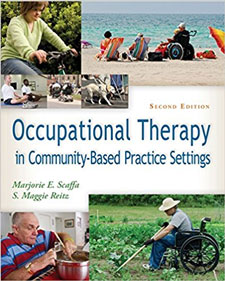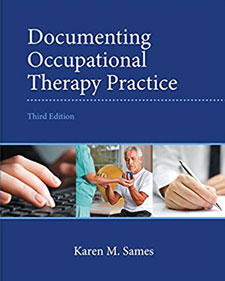Mental Activity
Zachowanie prawidłowej aktywności umysłowej w fibromialgii jest niezwykle ważne. W przebiegu fibromialgii u niektórych chorych dochodzi do zaburzeń funkcji poznawczych.
"I can deal with the pain, but the memory and thinking problems really worry me."
"The physical symptoms weren't as frightening as the memory problems."
"The most devastating effect for me has been the cognitive impairment."
If you have fibromyalgia (FM), then these quotes may describe what you have felt as well. Many FM patients complain of cognitive (or mental) symptoms such as memory failures (both long-term and short-term), difficulties with attention, and with finding the right words. Our research focuses on these cognitive problems in FM patients.
Our research shows that there really is cognitive dysfunction in FM patients. This is important because even though FM patients report cognitive symptoms, physicians and scientists must consider the possibility that because FM patients experience many symptoms, there may be a tendency to mistake normal, everyday lapses on cognition as something more serious. However, we have found that FM patients perform more poorly than age- and education-matched controls on tests of several different types of cognitive function. For example, FM patients could recall fewer words when given a list of words to remember and recall later. FM patients also performed more poorly on a test of working memory. Working memory refers to your ability to hold something in mind briefly while you use that information for some other mental process. It is your mental desktop. Multiplying large numbers in your head is a good example of a task that uses working memory. In addition, FM patients had lower scores on vocabulary tests, and had lower scores on a verbal fluency test. In the verbal fluency task, people are shown a letter and are asked to write down as many words as they can think of that start with that letter. It tests how quickly you can access your stored knowledge of words. Thus, our results show that FM patients do indeed have some cognitive dysfunction.
In fact, the cognitive performance of FM patients was equivalent to that of adults who were twenty years older than the FM patients on several of our tests. Moreover, the FM performance and that of the older adults was worse when compared to control subjects the same age, gender, and education level as the FM patients. Our research on aging shows that memory declines reliably every decade, and our results with FM patients suggest that FM patients were cognitively twenty years older in their performance on some tasks.
However, there was one key difference between the FM patients and the older controls. Older adults are typically slower than young adults on cognitive tests that measure how rapidly they process information. This slow processing explains many other symptoms of cognitive aging. But the FM patients were faster than the older adults, and in fact, were just as fast as the younger, age-matched controls. So although FM patients may perform similarly to older adults on some cognitive tasks, the underlying cause is not likely the same.
Professional Activity
If you have fibromyalgia, you probably have to work with a number of different therapists in order to keep your symptoms under control. This is rather normal, and nothing to be alarmed about. One of the therapists that you may be referred to is called an occupational therapist. What do these therapists do for you? How can they help you with the symptoms and what techniques do they use to allow you to live your life the way you want to live it? Let’s take a look here.
What is Occupational Therapy?
Occupational therapy, in short, is a type of therapy that helps people to be able to do everything that they need to do. It’s not just about exercise and flexibility – it’s about helping people to determine the best way for them to continue with your daily tasks. If you have issues with your hands and feel that you won’t be able to open up your jacket or button your pants, they can help you learn how to use your hands better or show you modified ways to do those things.
If you can’t be on your feet for a long period of time and you need to clean your home or do other tasks that involve being on your feet, occupational therapy can give you assistance in learning new ways to do so. Work is another area where occupational therapy shines. This may seem obvious, because the word “occupational” insinuates work. But they will come into the place that you work and see what you do. If there is anything that seems to be a struggle for you or you need some additional assistance with, the occupational therapist will take the time to help you figure out the best way to go about adjusting your workload and such.
The point is to help you stay at work, instead of allowing whatever is ailing you to push you out of work. So, if you have to make adjustments, you can learn how to do them, and you can work with your employer in order to ensure that you have what you need in order to succeed in the workplace. A diagnosis doesn’t have to be a retirement notice. There is an emotional end to occupational therapy as well. Sometimes, problems with physical health, aging, and other life events can make it difficult for you to function in a healthy manner. You know how upsetting and frustrating it can be to deal with your pain, and mental health struggles are a common side effect of disorders like chronic fatigue and fibromyalgia, so it’s a great thing to be able to deal with those issues in a healthy manner. Occupational therapy can help in a variety of other ways as well – it’s about helping the whole person and making sure that they are able to live a happy and fulfilling life, even if you’re dealing with pain and disability.
What can I gain from Occupational Therapy?
First off, as someone with fibromyalgia, they’re going to sit down with you and figure out some sort of plan. This plan could be any number of things, but it will include ways for you to adjust your lifestyle so that fibromyalgia doesn’t cause you more problems than it needs to. If the fibromyalgia is affecting areas of your body like your knees and legs, for example, an occupational therapist may suggest things like mobile chairs and stair lifts in order to help you get from one area of your home to the other. If it’s becoming hard for you to bend over, or it causes you more pain to do so, you can rearrange your home or your workspace in order to accommodate you a lot better. It’s all about helping you adjust while empowering you.
Then, they may sit down and talk to you about your mental symptoms. Is fibro fog an issue for you? Then they may help you to get in touch with resources that can help improve your memory and reduce the amount of fibro fog that you’re dealing with. They may get you access to puzzles and other fun activities that will grant you entertainment while allowing you to use your mind. If you’re having memory issues, they may teach you ways to remember more easily, or give you tips on improving your memory. As the patient, you’re in control, but they will help you determine the right path for these treatments. All in all, your occupational therapist will become an important part of your life. They will come and work with you on a regular basis, which you will have already outlined during the initial few meetings with them. They will come and assist you with certain tasks and, if you see any changes in your pain or stress, they will help to modify your program so that it better fits your current circumstances.
Occupational therapy is very flexible and flows with you and your specific needs, making it a wonderful addition to any therapeutic plan or setup you have in place. An occupational therapist can be a huge asset to your treatment team, especially if you’ve found that you’ve been debilitated by some of your fibromyalgia symptoms. Your doctor can direct you toward an occupational therapist if you are in need of assistance from one. There are usually a number of them in the area, because they are usually working with older adults in nursing homes and such, so finding one should be a simple task. On top of that, your insurance should also cover their assistance if your doctor states that you are in need of help from one.
Recommended Books
 Occupational Therapy in Community-Based Practice Occupational Therapy in Community-Based Practice |  Willard and Spackman's Occupational Therapy Willard and Spackman's Occupational Therapy |  Documenting Occupational Therapy Practice Documenting Occupational Therapy Practice |  Introduction to Occupational Therapy Introduction to Occupational Therapy |





